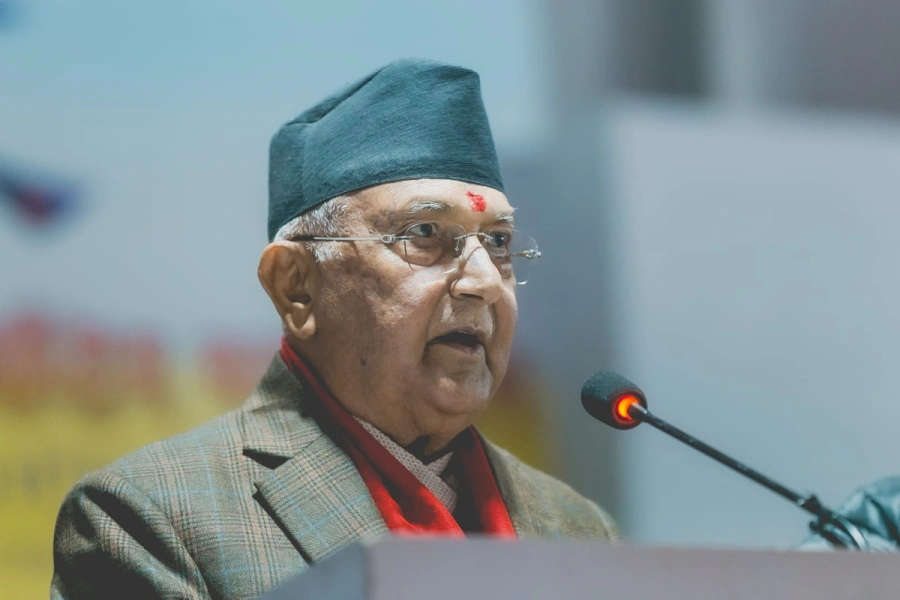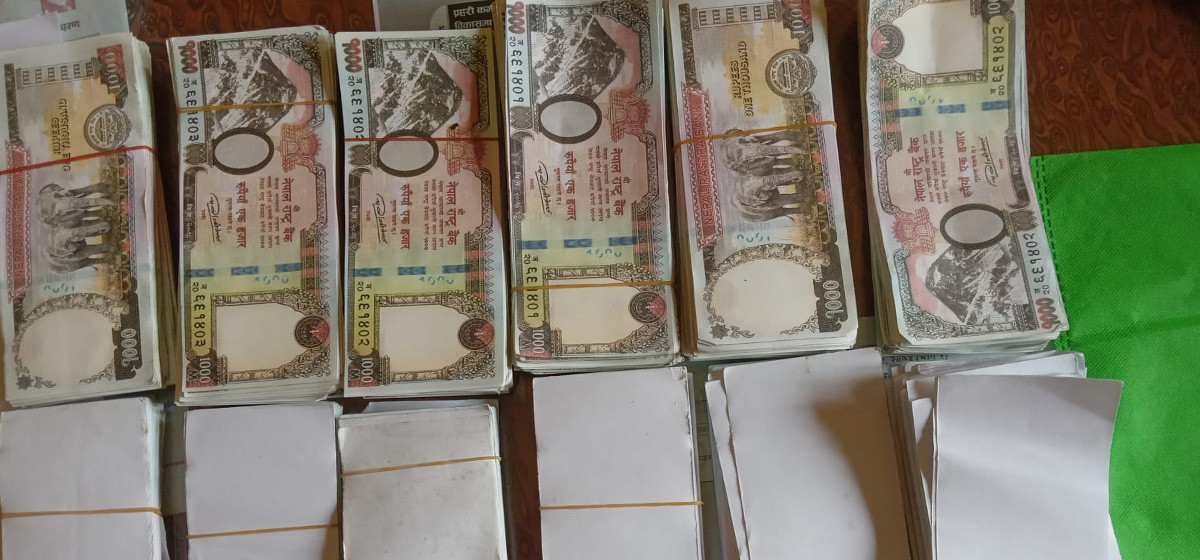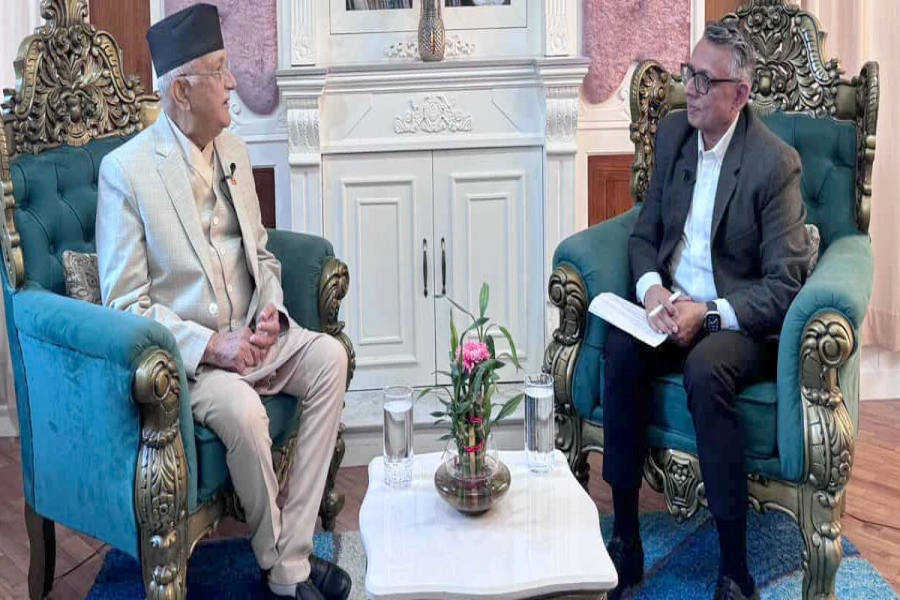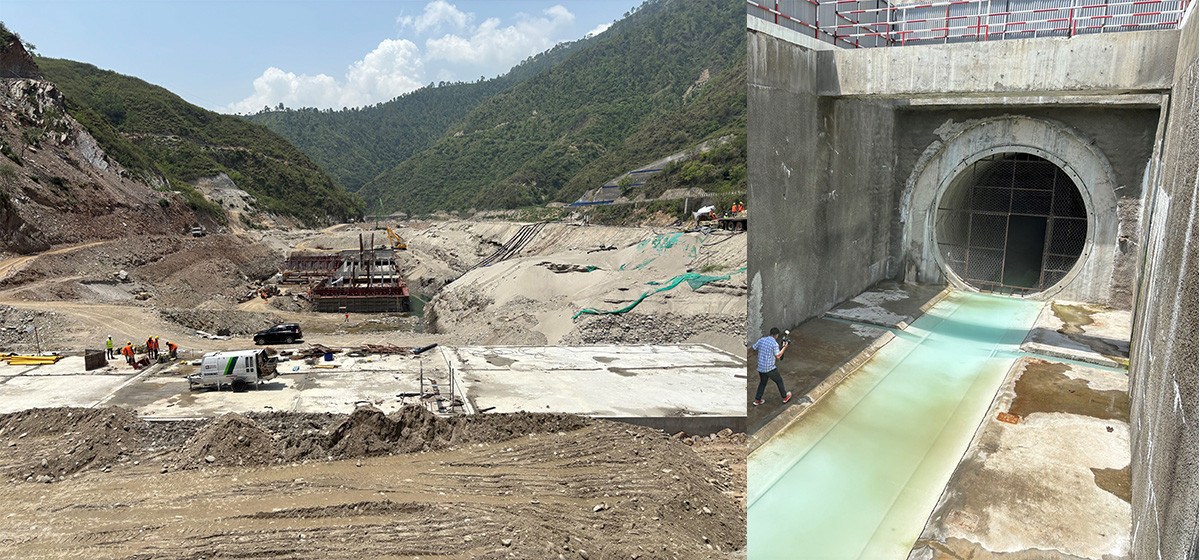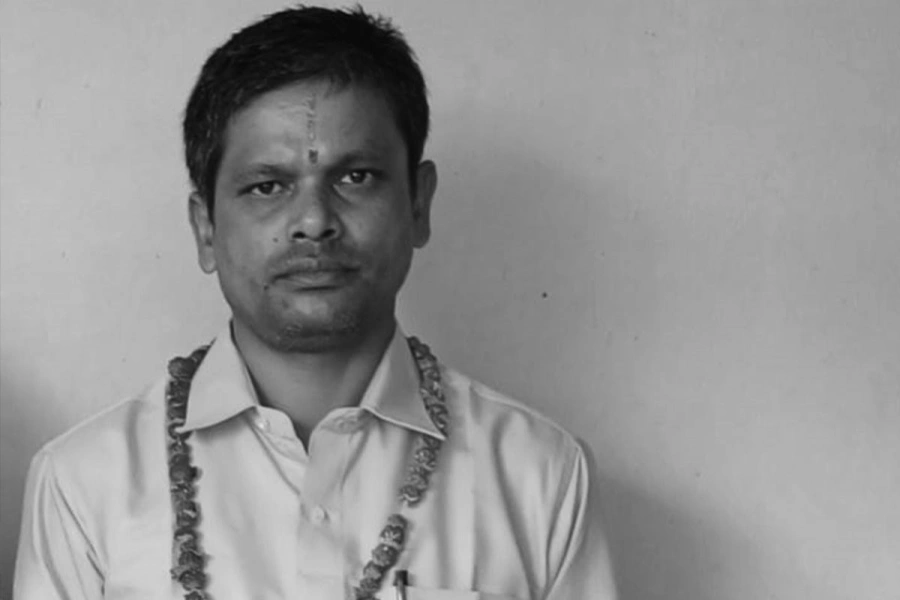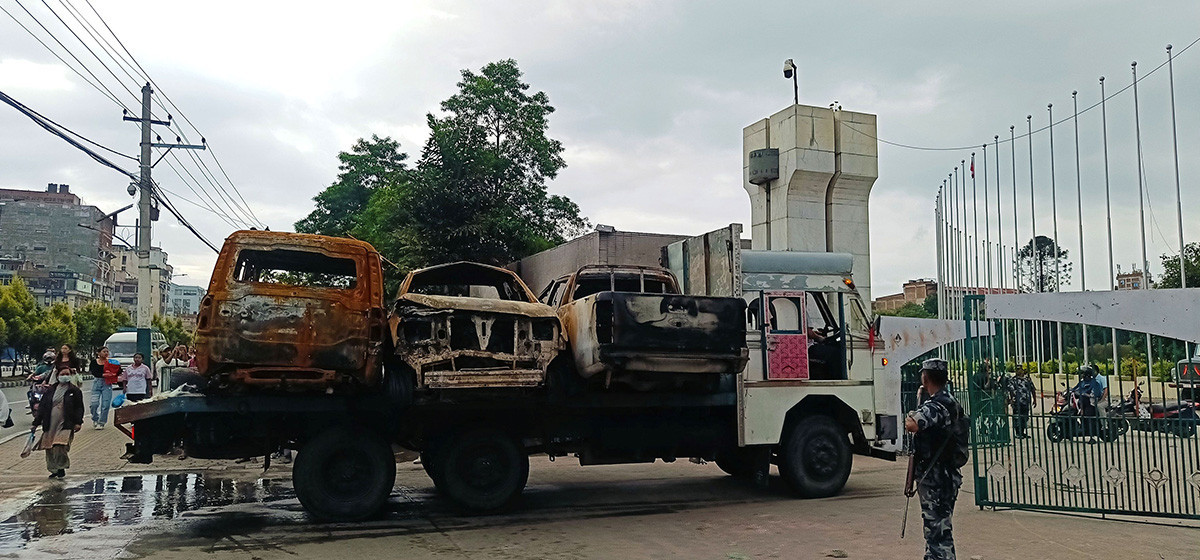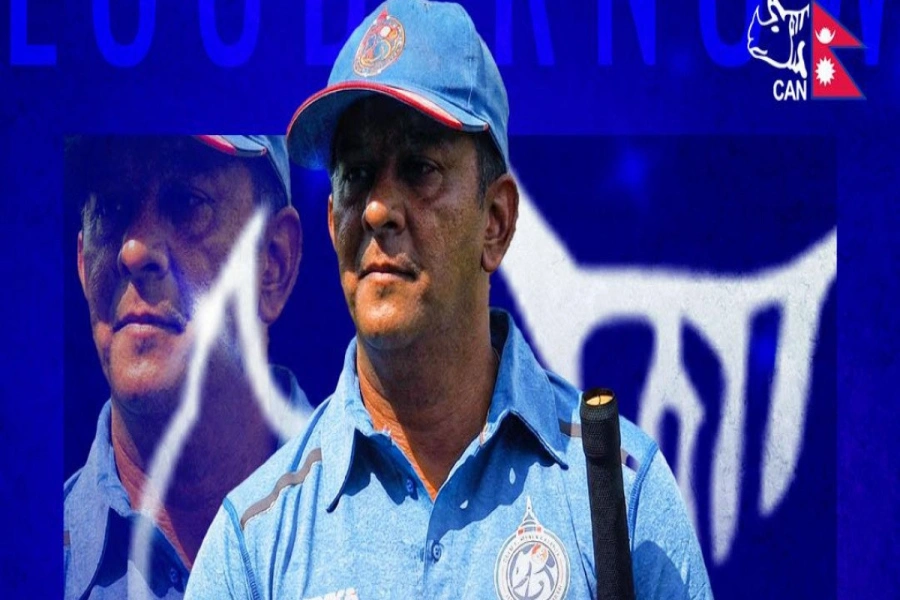Nine months of a woman’s endurance for letting a child grow inside her body, and then giving her entire youth to the upbringing of the offspring so that s/he leaves the mother alone one day, proves that motherhood is surely difficult to understand.[break]
“But the paintings are beautiful,” the visitor added.
To understand the emotions that Keepa has had worked on to bring forth on the twenty canvases for the last three months, she went through the process from the day she left home for the US for further studies in the 1990s. That in itself was and is a challenge.
But as soon as the artist with a babyish smile started describing the flowing oval shaped images, there appeared the vivid figures of a woman and her baby going through an array of emotions and transitions in their joint life.

From a heart filled with hope of a newly pregnant woman on Keepa’s first canvas to the agonies and restlessness she experiences as her child matures to a lady and searches for her own identity, Keepa has been able to depict each and every experience that a mother goes through for her child.
“So, is this your experience of motherhood?”
“I’m not a mother yet,” Keepa said and added, “This exhibition is about the relationship and experiences that I share with my mother. When I was in the U.S, I realized what my mother possibly went through while I was living far away from her in search of my own identity.”
Now back in Kathmandu, Keepa has dedicated this series to her mother and all the people who can relate to the emotions that she has painted.
Keepa studied International Affairs for a year in America but was not able to adjust to the subject. It was not that she wasn’t doing well in her studies but there was something else that interested her.
“I wasn’t satisfied with the subject I chose. And a friend encouraged me to take some art classes,” said she. She found her peace of mind in the world of art, which proved that creativity runs in her blood.
Daughter of TV journalist Baikuntha Maskey and granddaughter of the late artist Krishna Bahadur Chitrakar, Keepa, unlike many of her contemporaries who either refer to photos or scenes to start their work, has her own unique style of working.
Usually, she tends to start intuitively. “I involve my subconscious, to begin with, and then my consciousness helps me give full shape to the images,” added Keepa.
Her fascination with circular and oval shapes shows in the twenty canvases at the exhibition, which is ending today.
“Whenever I sit down to paint, I unconsciously start with an oval shape. I don’t know why. But I was fascinated by the shape from my childhood.”
An art connoisseur present in the gallery at the moment, and while scrutinizing the paintings, added, “Circular shape is the base of every form of art.”
To support the dominant shapes, she has resorted to lines and squares. For example, in the painting titled “Differences” where a child’s process of thought starts taking different shapes from her mother’s, Keepa has employed lines to demonstrate the growing differences between the child’s beliefs and thoughts from her mother’s.
Besides the shapes, colors also have helped Keepa express her emotions. From darker hues to the brighter ones such as red, Keepa has experimented with the colors like emotions itself.
But “I never pay attention to the color theory. I do what my emotions demand,” said the painter.
Rather than colors, her primary focus has been on the human body’s position. “Because in any composition, body languages say a lot about what an artist is trying to convey,” said the artist.
A graduate of the Marymount Manhattan College of Fine Arts in the US, Keepa has contributed her artworks to various fundraising events held in New York and India. During her stay in New York, though not professionally active in the art field, she collected vintage cloths and designed them to keep her creativity alive. Now she is back in her home country and has decided to professionally involve herself in art.
Even Keepa’s mother, who is happy about how her daughter understood her and has returned to Nepal, shares the joy of it all.
“First, I didn’t understand. But after seeing whatever was there, and the way she interpreted my feelings through her paintings, I was touched. I even broke down on the inauguration day,” says Bimala Maskey, Keepa’s mother.
The abstract forms of mother and child in Keepa’s paintings give a viewer a chance to ponder on the relationship that one has with the mother, and helps realize a mother’s period of devotion, pains, and ordeals that she goes through during her child’s growth.
Keepa’s works are an apt presentation at a time where parenting has become a tougher challenge due to the growing negative societal factors such as drugs and political imbroglios.
Keepa’s one other frame in the series is a painting titled “Identity” where the child now is all grown up and finds her individuality, which has the warmth and hallmark of the mother.
Want to know what the visitor did for whom Keepa’s visuals were “difficult to understand”?
He bought a painting of Keepa’s.
Finding common ground



